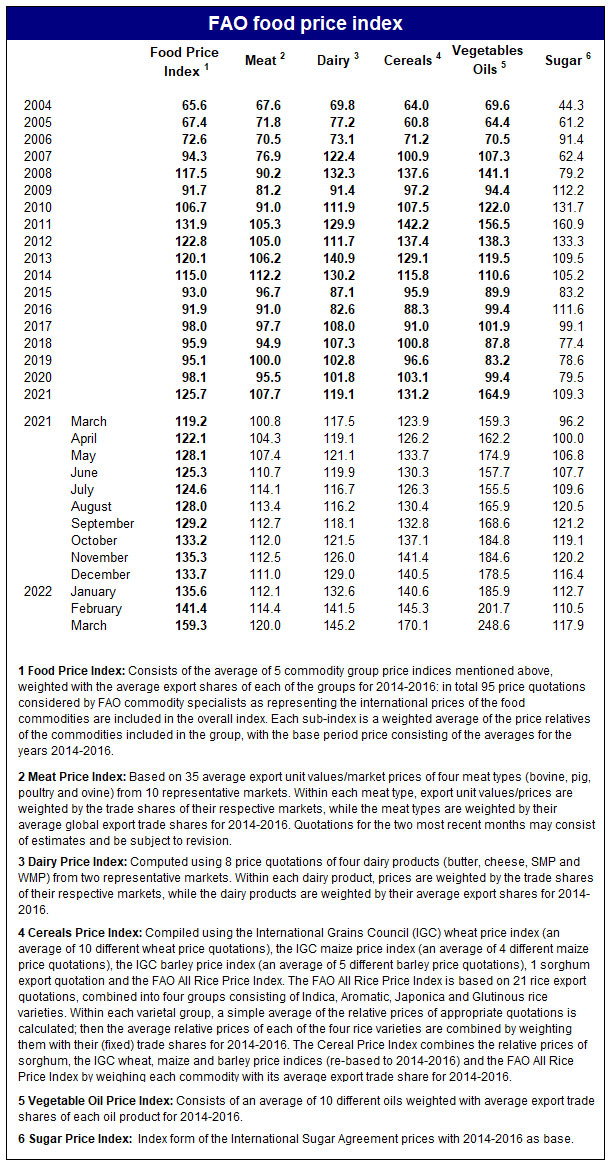FAO Meat Price Index reached an all-time high in March
The FAO Meat Price Index averaged 120.0 points in March, up 5.5 points (4.8 percent) from February, also reaching an all-time high. In March, pig meat prices registered the steepest monthly increase on record since 1995, underpinned by supply shortfalls of slaughter pigs in Western Europe and a surge in internal demand in light of the upcoming Easter holidays. International poultry meat prices firmed, fuelled by reduced supplies from leading exporting countries following avian flu outbreaks, further impacted by Ukraine’s inability to export poultry meat amid the ongoing conflict. Bovine meat prices also firmed as the tight supply of slaughter-ready cattle persisted in some key producing regions, while global demand remained solid.

Here is how the global food market reacted last month in front of the Russian invasion of Ukraine. The FAO Food Price Index averaged 159.3 points in March, up 12.6 percent from February when it had already reached its highest level since its inception in 1990. The Index tracks monthly changes in the international prices of a basket of commonly-traded food commodities. The latest level of the index was 33.6 percent higher than in March 2021.
The FAO Cereal Price Index was 17.1 percent higher in March than in February, driven by large rises in wheat and all coarse grain prices largely as a result of the war in Ukraine. The Russian Federation and Ukraine, combined, accounted for around 30 percent and 20 percent of global wheat and maize exports, respectively, over the past three years. World wheat prices soared by 19.7 percent during the month, exacerbated by concerns over crop conditions in the United States of America. Meanwhile, maize prices posted a 19.1 percent month-on-month increase, hitting a record high along with those of barley and sorghum. Contrasting trends across the various origins and qualities kept the March value of FAO’s Rice Price Index little changed from February, and thus still 10 percent below its level of a year earlier.
The FAO Vegetable Oil Price Index rose 23.2 percent, driven by higher quotations for sunflower seed oil, of which Ukraine is the world’s leading exporter. Palm, soy and rapeseed oil prices also rose markedly as a result of the higher sunflower seed oil prices and the rising crude oil prices, with soy oil prices further underpinned by concerns over reduced exports by South America.
The FAO Sugar Price Index rose 6.7 percent from February, reversing recent declines to reach a level more than 20 percent higher than in March 2021. Higher crude oil prices were a driving factor, along with currency appreciation of the Brazilian Real, while favorable production prospects in India prevented larger monthly price increases.
The FAO Dairy Price Index rose 2.6 percent and was 23.6 percent higher than in March 2021, as quotations for butter and milk powders rose steeply amid a surge in import demand for near and long-term deliveries, especially from Asian markets.
Central to the Aussie Meat Academy are influential food industry professionals who are passionate...

“Looking at the United Kingdom alone, there are 3.9m Muslims and our research suggests that...

A record-breaking Gulfood attendance set the tone for the year, with tradeshows and exhibitions b...
